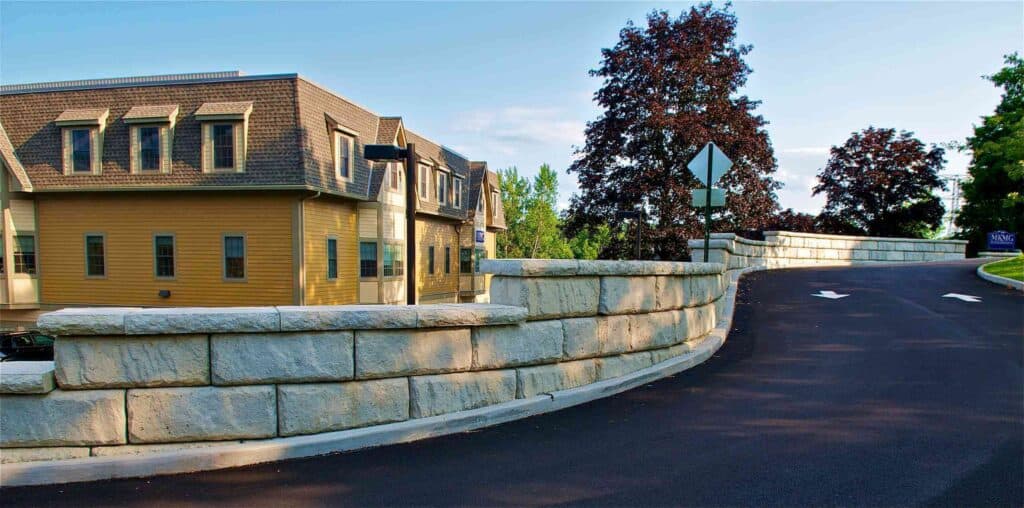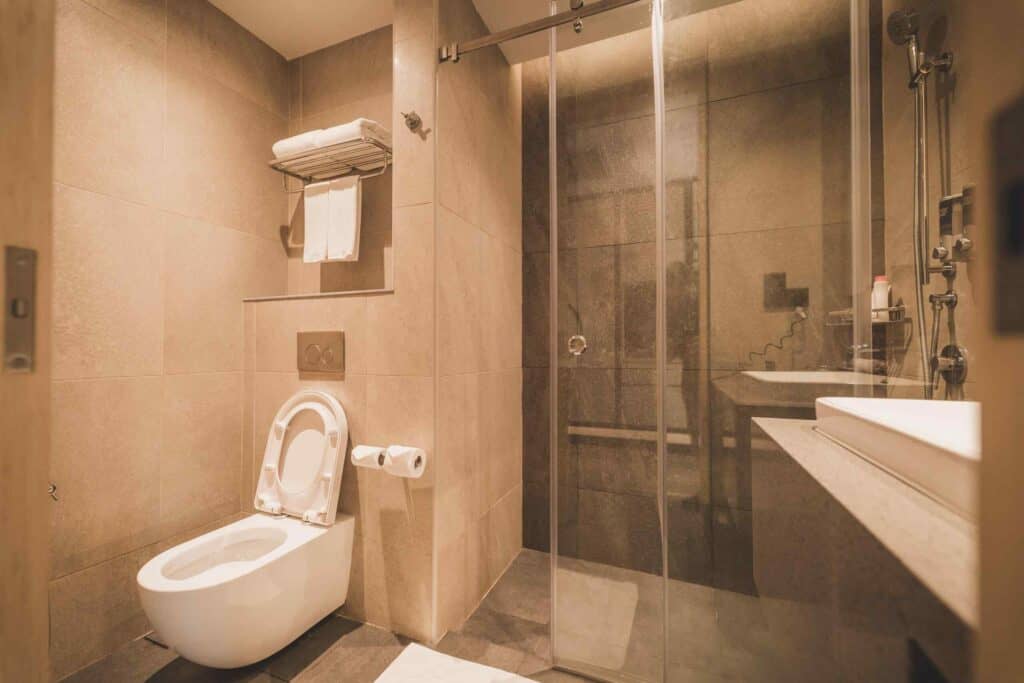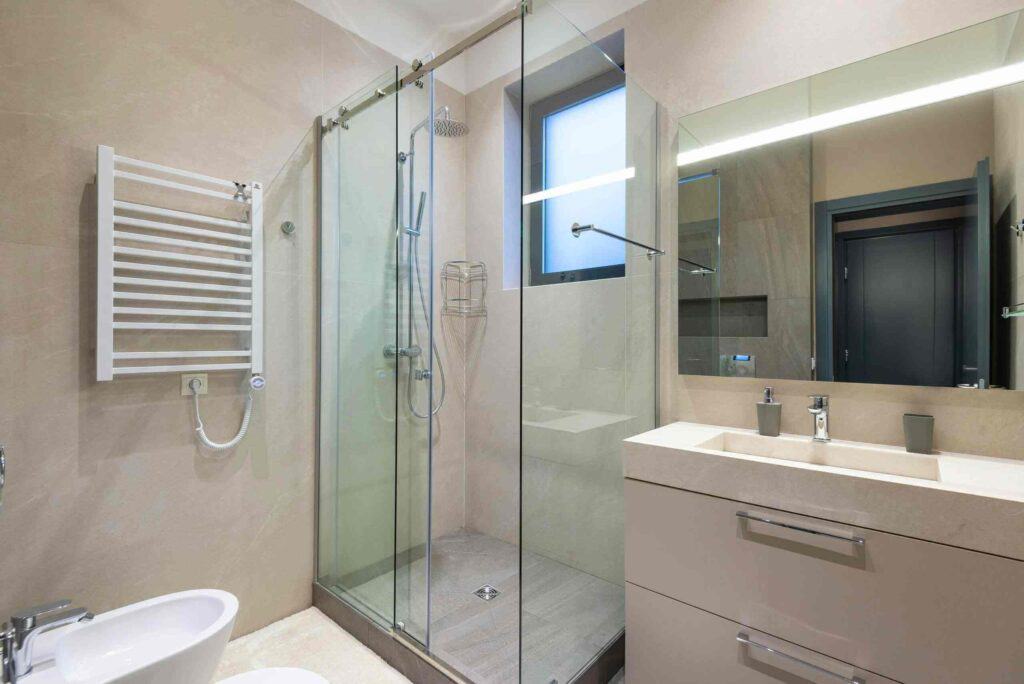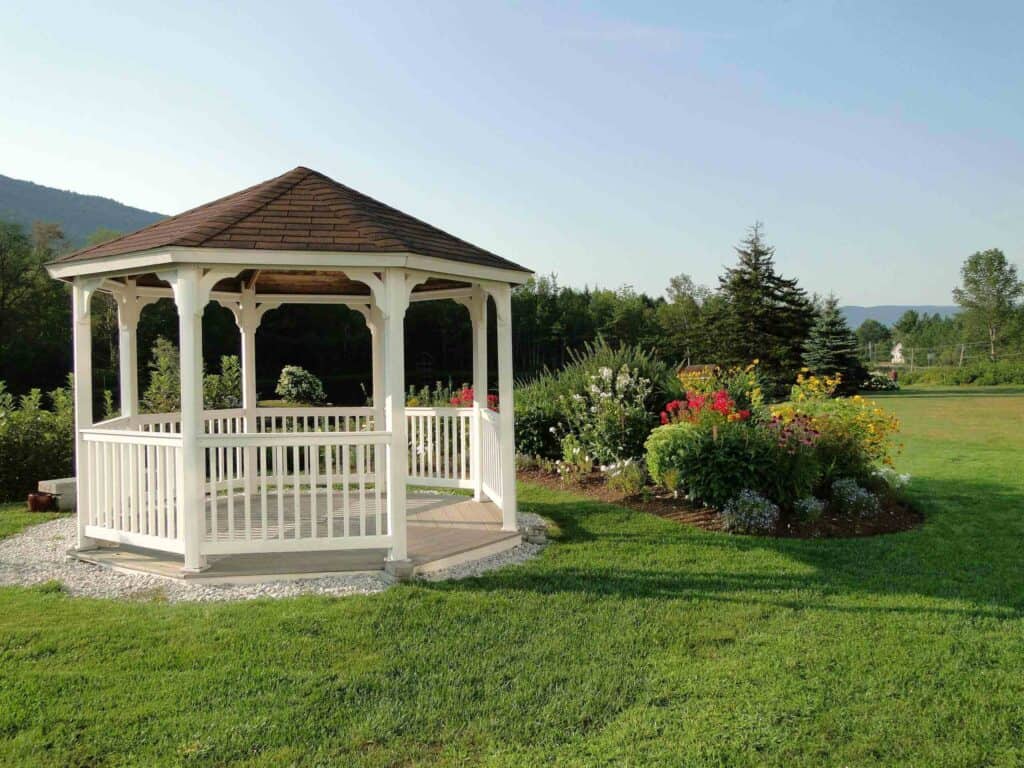If you’ve ever stared at a sloped backyard wondering how to turn it into a beautiful, functional space, you’re not alone. Sloped terrain can be tricky—it limits usable space, causes water runoff issues, and frankly, isn’t the most visually appealing. That’s where retaining walls come in. But they’re no longer just utilitarian structures made of concrete. Today’s retaining wall ideas combine form and function, giving your outdoor space structure, personality, and style.
In this guide, we’ll explore the purpose of retaining walls, break down different materials, share creative design ideas, and offer practical tips to help you build a wall that works hard—and looks great doing it.
Why Build a Retaining Wall?
Think of a retaining wall as your yard’s silent hero. It holds back soil, reshapes uneven ground, prevents erosion, and helps manage water runoff. But beyond that, it can dramatically enhance your landscape’s overall look and usability.
Here’s what a retaining wall can do for your outdoor space:
- Flatten sloped areas to create patios, gardens, or play zones
- Reduce soil erosion by managing water flow
- Divide your yard into distinct zones for function and aesthetics
- Add visual interest, texture, and depth to flat or sloped yards
- Double as built-in seating, garden beds, or decorative features
- Improve accessibility in multi-level yards with integrated steps or paths
- Increase property value through enhanced curb appeal and functionality
Whether you’re tackling a steep hillside or simply want to elevate your curb appeal, the right retaining wall can make all the difference.
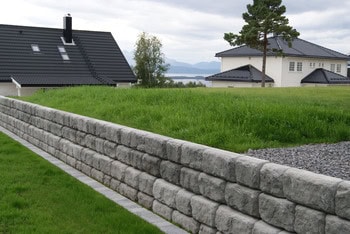
Material Options: What Should You Build With?
The material you choose for your retaining wall affects everything from its durability and maintenance to its overall look and feel. Here’s a closer look at the most popular options:
1. Natural Stone Walls: Rugged Beauty That Lasts
Natural stone walls are classic and timeless. Materials like fieldstone, limestone, and granite blend beautifully into any garden or rustic setting. They can be dry-stacked (without mortar) or built with mortar for extra strength.
Pros:
- Earthy, elegant look that never goes out of style
- Extremely durable and weather-resistant
- Ideal for traditional or nature-inspired landscapes
Cons:
- Labor-intensive and more costly
- Requires professional installation for best results
Best For: Cottage gardens, rustic landscapes, properties with natural stone features
Pro Tip: Combine stones of various sizes and textures for a more natural, organic appearance.
2. Wood Retaining Walls: Warm and Affordable
Wooden walls, often made with pressure-treated timber or railroad ties, create a relaxed, natural vibe. They’re great for DIYers and work well for small-scale projects.
Pros:
- Budget-friendly and easy to install
- Ideal for terracing small slopes or quick fixes
- Lightweight and versatile
Cons:
- Limited lifespan (typically 10–20 years)
- Susceptible to rot and insects if not treated properly
Best For: Informal gardens, quick weekend projects, budget-conscious homeowners
Pro Tip: Use gravel backfill and drainage cloth behind wood walls to extend their life.
3. Concrete Blocks: Sleek and Structural
Concrete retaining wall blocks come in various shapes, colors, and textures. Many are designed to lock together, making installation easier—especially for curved or tiered walls.
Pros:
- Strong and long-lasting
- Modern look with clean lines
- Some varieties mimic stone for added versatility
Cons:
- Heavier and more difficult to install solo
- Higher initial cost than wood
Best For: Contemporary homes, tiered gardens, long-term investment projects
Pro Tip: Choose textured or split-face blocks for added dimension and visual appeal.
4. Gabions: Industrial Meets Natural
Gabion walls use metal cages filled with rocks, concrete chunks, or even recycled materials. They’re edgy, eco-friendly, and excellent for drainage.
Pros:
- Sustainable (can use local or recycled fill)
- Low maintenance and great for drainage
- Can double as artistic focal points
Cons:
- Industrial aesthetic isn’t for everyone
- Wire baskets may rust over time if untreated
Best For: Urban gardens, rain gardens, modern-industrial landscapes
Pro Tip: Mix different rock sizes and colors in your gabion for a unique, customized look.
5. Boulder Walls: Raw and Organic
Boulder walls are made of large, irregular stones and offer a strong, grounded look. These walls feel like part of the natural environment.
Pros:
- Incredibly durable and low-maintenance
- Can be cost-effective with local stone
- Organic, nature-integrated aesthetic
Cons:
- Hard to install without machinery
- Requires a trained eye to stack properly
Best For: Mountain homes, woodland gardens, large slopes
Pro Tip: Plant ground cover between boulders for a softened, lush effect.
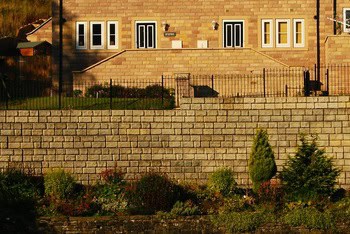
Creative Retaining Wall Design Ideas
Don’t settle for basic. Today’s retaining walls can be multifunctional and beautiful. Here are some creative ways to elevate your wall:
1. Tiered Garden Walls
Layer smaller walls to create a terraced effect. It’s perfect for sloped gardens and lets you plant herbs, flowers, or even vegetables at each level. Bonus: it helps with drainage and soil retention.
2. Curved or Flowing Lines
Straight walls are fine, but curves follow the natural flow of the landscape and soften the overall design. This technique adds visual interest and breaks up the rigidity of traditional wall lines.
3. Built-In Steps and Pathways
Incorporate stairs into your wall to connect different levels of your yard. It’s both functional and beautiful. Try using the same material for continuity or mix textures for contrast.
4. Living (Green) Walls
Design your wall to include pockets or planters where you can grow succulents, herbs, or trailing flowers. It’s a great way to bring your retaining wall to life—literally.
5. Seating or Fire Pit Integration
Add functionality by creating seating along your wall or incorporating a fire pit backdrop. It maximizes space in small yards. Include cushions or wooden tops for comfort and warmth.
What to Know Before You Build
Behind every beautiful wall is a solid foundation. Here are some important tips before you start:
Drainage Is Crucial
Trapped water adds pressure and can cause walls to fail. Use gravel backfill, perforated drainage pipes, and weep holes to allow water to escape. Proper drainage is non-negotiable.
Soil Type Matters
Clay holds water, while sandy soil drains faster. Know your soil type so you can plan accordingly. You may need to amend your soil or reinforce your structure based on composition.
Permits and Regulations
Most municipalities require a permit for walls taller than 3 or 4 feet. Check local codes before you dig. Also, ensure your design doesn’t affect neighbor drainage or property lines.
DIY or Hire a Pro?
Simple, short walls? Go for it yourself. Taller or structural walls on steep slopes? Bring in a pro for safety and stability. Hiring a landscape architect or engineer might save money long-term.
Plan for the Long Term
Think beyond aesthetics. Will your wall need to support heavy loads? Is it in a high-traffic area? Factor in longevity, safety, and future maintenance.
Cost Breakdown: What You Can Expect
Costs vary by material, height, and labor. Here’s a rough idea:
| Material | DIY Cost per Sq. Ft. | Installed Cost per Sq. Ft. |
| Wood | $15–$25 | $30–$50 |
| Natural Stone | $25–$40 | $45–$75+ |
| Concrete Blocks | $20–$35 | $40–$70 |
| Gabions | $10–$30 | $30–$60 |
| Boulders | $20–$35 | $40–$80 |
Extras like gravel, filter fabric, drainage pipes, lighting, and sealing treatments will add to your total. It’s worth it—cutting corners on drainage or stability can lead to costly repairs later.
Eco-Friendly Options for the Sustainability-Minded
Want to make a greener choice? Here’s how:
- Use reclaimed materials like old bricks, timbers, or concrete chunks
- Build a rain garden behind the wall to manage stormwater naturally
- Choose gabion fill from local or recycled sources
- Plant native species to support local pollinators and reduce maintenance
- Avoid synthetic sealants—opt for breathable, low-VOC products
- Consider solar-powered wall lights to reduce energy use
Inspiring Real-Life Ideas
Terraced Stone Garden
Short stacked stone walls create a series of planting beds. Add solar path lights and flowering perennials for a magical nighttime effect.
Gabion Fire Pit Wall
Low gabion walls filled with river rock surround a circular fire pit. It’s cozy, modern, and practical for seating.
Timber Wall with Built-In Planters
Pressure-treated wood timbers form a stepped wall with built-in planting gaps. Perfect for herbs, strawberries, or trailing vines.
Modern Concrete Patio Wall
Smooth concrete blocks form a sleek boundary around a patio. Add LED lighting or a bench top for extra function.
Frequently Asked Questions
Q: What’s the easiest retaining wall to DIY?
Wood and small concrete block walls under 3 feet are most beginner-friendly.
Q: How long will my wall last?
- Wood: 10–20 years
- Stone, concrete, gabion: 50+ years with proper maintenance
Q: Can a retaining wall increase home value?
Yes! A well-designed wall adds curb appeal and usable space—both big selling points.
Q: Are they safe for kids?
Yes, as long as height is considered and barriers are added for taller walls. Some even build play areas into terraced walls.
Q: Can I add lighting or features?
Absolutely. Walls are perfect for built-in lighting, fountains, spillways, and seating.
Q: Do I need a permit?
Most areas require permits for walls over 3 or 4 feet. Always check with your local planning department.
Q: How do I ensure proper drainage?
Install gravel backfill and a perforated drain pipe (French drain) behind the wall. This directs water away and prevents pressure buildup.
Q: What is the most cost-effective retaining wall material?
Pressure-treated wood tends to be the most affordable, especially for low-height walls. Gabions can also be cost-effective if you have access to free or inexpensive fill materials.
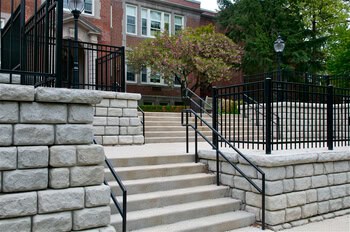
Final Thoughts: Build a Wall That Works and Wows
A retaining wall can be much more than a structural necessity—it can be the feature that transforms your outdoor space. Whether you love the timeless look of natural stone, the modern flair of concrete, or the eco-edge of gabions, there’s a wall that suits your style, budget, and landscape needs.
Take your time, plan it well, and invest in the little details like drainage and lighting. Your yard will not only look better—it’ll function better for years to come. Now go out there and build something beautiful! Call Micton Home Renovations by calling on 226-600-5925 today.

